Quick links
Welcome to our Creation Creation Study Guide!
The general capabilities are embedded within specific learning activities and can be identified with the following icons:
The general capabilities are embedded within specific learning activities and can be identified with the following icons:
Synopsis
How did we get here? What is the meaning of life? And is it possible to lick your elbow? We’ve been on a mission asking you, the general public, what you really want to know. Then, we chose two of our favourite artists to answer these burning questions using any means at their disposal. Before your very eyes, our unreliable experts build, battle and brawl as they attempt to resolve some of life’s epic mysteries from the big bang to the afterlife and many conundrums in between. It’s a creation about creation.
One of the real starting points of this project was looking at all of the different people that are in our community and thinking about how we all go about managing our lives and explaining the seemingly unexplainable. We’re all constantly creating meaning in different ways, every day – we all have different points of view, different ideas and beliefs about the world around us and kids are often a mashup of these things. This process of creation connects us, more than anything. This project is about bringing all of that wonderful difference onto the stage, and to have two incredible creators (Jonathon Oxlade and Fleur Elise Noble) use their powers of invention to work through all of those different points of view.
This is a show about us, about you. About the world you live in and have constructed for yourself, and about the marvellous powers of invention that you possess… even if you don’t 100% know it, yet.
We count ourselves incredibly fortunate to be the stewards of stories and ideas from all over the world and look forward to making a wonderful mess onstage. It’s going to be a lot of fun.
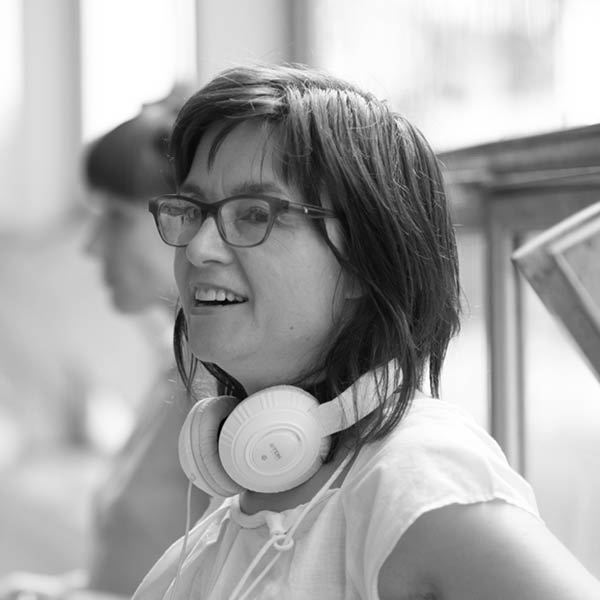
Community Minded
Over 50 people from all over South Australia were interviewed ahead of Creation Creation.

Co-Creator, Director
Rosemary Myers is the Artistic Director of Windmill Pictures. In 2021, she co-created and directed Beep and Mort.
In 2015, her first feature film Girl Asleep opened the 2016 Berlinale Generation 14plus and went on to win the MIFF Age Critic Prize 2016, the Grand Jury Prize at the 2016 Seattle Film Festival, 2016 CinefestOZ Film Prize and eight AACTA Award nominations including Best Film and Best Director. In 2020, the film was nominated for the Byron Kennedy AACTA for Best Indie Film of the past decade.
Before her role at Windmill Pictures for over 14 years, Rosemary was the Artistic Director of Windmill Theatre Company. A multi-Helpmann Award nominated theatre director, her productions have toured to prestigious venues and festivals across the world, including Giffoni Film Festival, Rooftop Film Festival New York, Sydney Opera House, New York’s New Victory Theatre and London’s Southbank Centre, among others. In 2017 she was awarded the prestigious Australia Council Theatre Award.
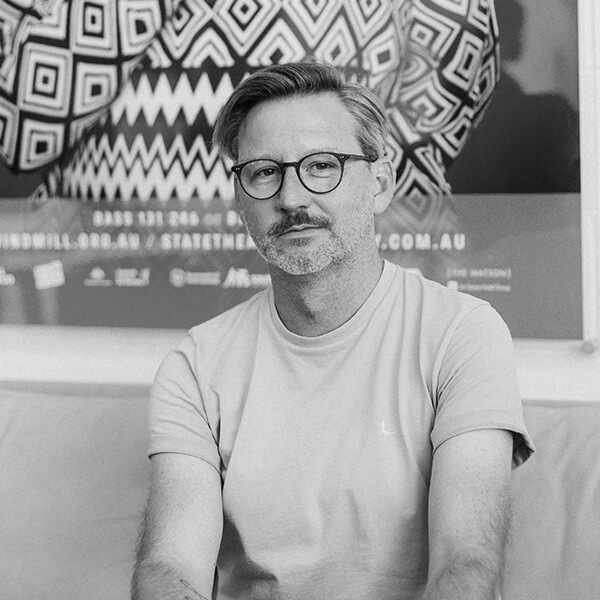
Co-Creator, Designer
An award-winning designer for theatre, film and television, Jonathon has designed for companies including: Sydney Theatre Company, Melbourne Theatre Company, Queensland Theatre, State Theatre Company of South Australia (STCSA), Belvoir Theatre, LaBoite, Bell Shakespeare, isthisyours?, Aphids, Arena Theatre Company, Polyglot, The Real TV Project, Polytoxic, Men of Steel, Lemony S Puppet Theatre, Terrapin Puppet Theatre, Vitalstatistix, Barking Gecko, The Border Project, Dead Puppet Society, The Last Great Hunt, Restless Dance Theatre, The Escapists and Sandpit. Jonathon was festival designer for the Out of the Box Festival and Brisbane Festival’s Arcadia.
Recent theatre credits include: Bluey’s Big Play (AKA Productions/BBC Studios/QPAC/Windmill); Oklahoma (Black Swan Theatre Company) and Dance Nation (STCSA/Belvoir).
Jonathon designed the film Girl Asleep (Windmill) for which he won an AACTA Award (Best Costume Design), received an AACTA nomination (Best Production Design) and won two APDG Awards (Best Production Design and Best Costume Design). The same year, he won a Sydney Theatre Award for Best Costume Design for Mr Burns (Belvoir/STCSA); and a PAWA for Mr Irresistible for The Great Last Hunt.
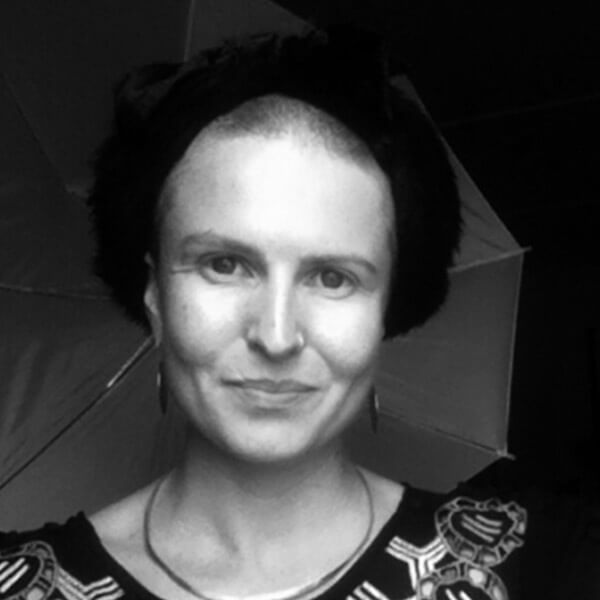
Co-Creator, Director, Performer
Fleur is a maker of all things visual. She works with the mediums of drawing, sculpture, animation, film, puppetry, projection and performance to create 3-dimensional projection performances, akin to giant paper pop-up books that come to life. She studied on scholarships at art schools in Adelaide (ACSA) and New York (NYSS). Her most renowned work to date is her visual performance 2-Dimensional Life of Her, which was invited to perform at over 40 venues and festivals around the world. Her second major production ROOMAN premiered in Melbourne in 2017, after which it went on tour to Europe, the UK and NZ. Fleur has also spent many years working with the Sharing Stories Foundation, developing projects with young people and elders in indigenous communities.
Fleur has won numerous prizes and awards for her work, including a prestigious Bessie (New York Dance and Theatre Award) for most Outstanding Visual Design.
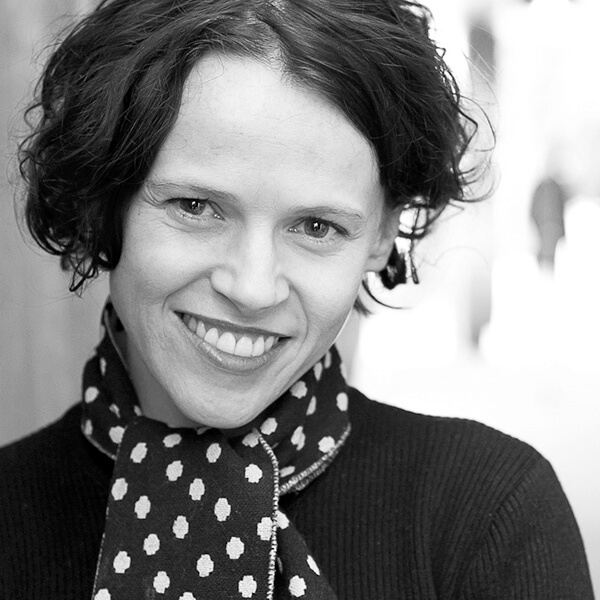
Co-Creator, Interviewer, Scriptwriter
Roslyn Oades is an award-winning theatre-maker and documentary artist. She is best known for pioneering work in the field of headphone-verbatim theatre. Her original works for stage include: Hello, Goodbye & Happy Birthday, I’m Your Man, In a Deep Dark Forest, Cutaway–A Portrait, Stories of Love & Hate and Fast Cars & Tractor Engines.
She also creates site-based audio experiences, including: Cell 26 an audio work for a prison bed, Sea Stories an audio work for sunrise and The Nightline a listening club for insomniacs. She harbors an ongoing fascination with innovative creative non-fiction forms of art making.
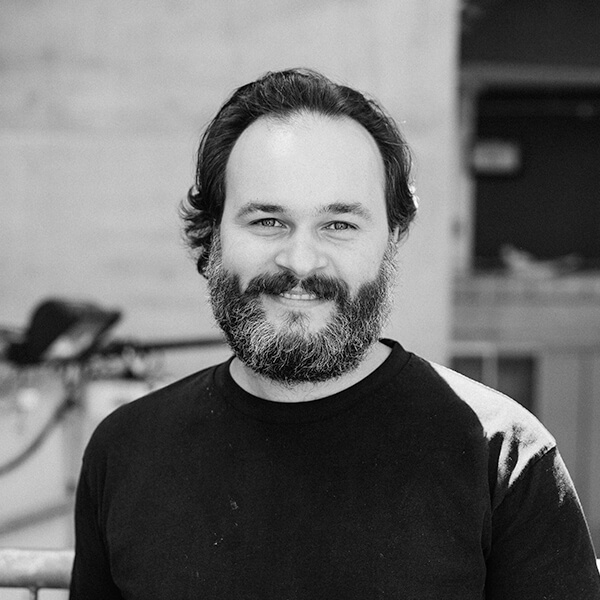
Lighting & Technical Designer
Chris is a lighting and video designer working across theatre, dance, and other live events in Australia and internationally.
Recently, Chris designed the lighting for New Zealand’s World of WearableArt 2019 arena show and 13 Ways to Look at Birds featuring Paul Kelly, James Ledger, Alice Keath and the Seraphim Trio.
Lighting design credits include: A View from the Bridge, Brothers Wreck, In The Club, Terrestrial, Mr Burns, Red Cross Letters, Eh Joe for The Beckett Triptych, Gorgon, Masquerade, The Kreutzer Sonata, Maggie Stone and Little Bird (State Theatre Company of South Australia), Lines (Theatre Republic), Angelique (isthisyours?), Long Tan (Brink Productions), Deluge (Tiny Bricks). The Beginning of Nature Part 1, Ignition 2016 (Australian Dance Theatre). Zizanie, Touched (Restless Dance Theatre), Songs for Those Who’ve Come Across the Seas, Emil and the Detectives, The Mouse, The Bird and The Sausage (Slingsby Theatre Company), Beep, Grug and the Rainbow, Big Bad Wolf, Story Thieves (Windmill Theatre Company), Never Did Me Any Harm (Force Majeure), Cher, Quiet Faith (Vitalstatistix), Bitch Boxer, Seawall (Flying Penguin).
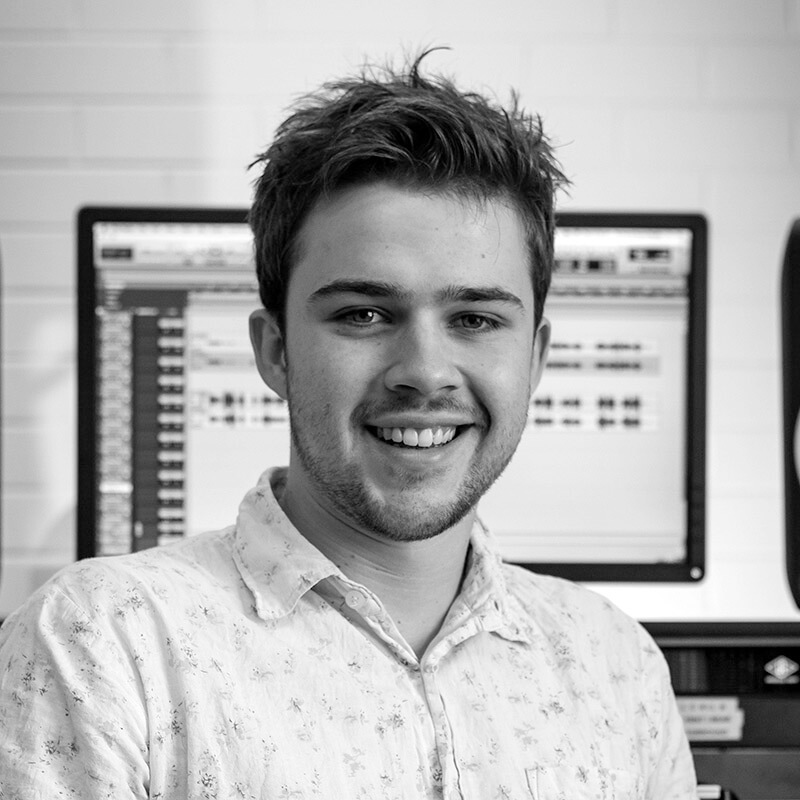
Composer & Sound Designer
Harry creates eclectic music/sound design for screen and live performance. In 2020, he composed ROBOROVSKI, the animated short film directed by Dev Patel and Tilda Cobham-Hervey which premiered at the Adelaide Film Festival. Other notable works include feature film, Girl Asleep, directed by Rosemary Myers and the short film, A Field Guide to Being a 12 Year Old Girl directed by Tilda Cobham-Hervey (Crystal Bear).
Theatre credits include Creation Creation and Big Bad Wolf (Windmill Theatre Company) and Atlantis (Belvoir). For Back to Back Theatre he composed the original score for the internationally acclaimed video project, The Democratic Set and the third iteration of the video series, Radial, created in collaboration with the National Theatre of Scotland.
In 2021, Harry developed the original score for Wandering Stars, an immersive public sculpture/sound work for the inaugural Rising Festival. He is also the Composer of Windmill Pictures’ children’s series Beep and Mort.
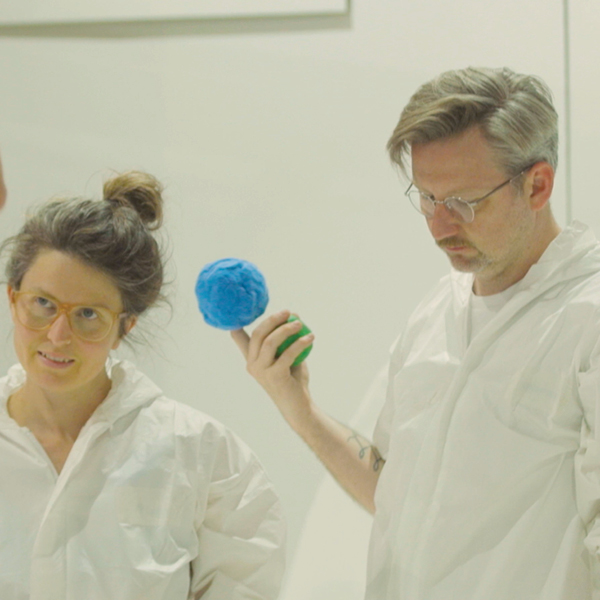
Jox and Fleur are our unreliable experts. Two brilliant artists who build, battle and brawl their way through your most burning questions. Here, they tell us all about the challenge of bringing Creation Creation to the stage.
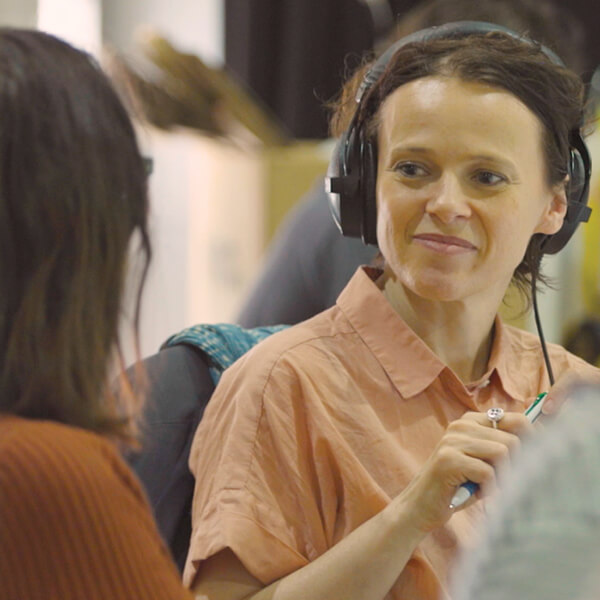
Director Rose Myers and documentary artist Roslyn Oades talk us through the inspiration for Creation Creation, introduce us to the marvellous world of documentary theatre and tell us about some of the amazing people they’ve met throughout the process.
What is Documentary Theatre?
Documentary theatre refers to theatre-making processes that ‘draw from’ or ‘bear witness’ to real events, people, places or circumstances in the world around us. Everything from an interview, diary entry or research can form the basis of documentary theatre.
Students viewing live theatre can experience feelings of joy, sadness, anger, wonder and empathy. It can engage their imaginations and invite them to make meaning of their world and their place within it. They can consider new possibilities as they immerse themselves in familiar and not so familiar stories.
Watching theatre also helps students understand the language of the theatre. It is part of the holistic approach to developing student literacy. They learn to ‘read’ the work, interpreting the gesture and movement of a performer; deconstructing the designers’ deliberate manipulation of colour, symbol and sound; and reflecting on the director’s and playwright’s intended meaning.
While viewing the show, students’ responses can be immediate as they laugh, cry, question and applaud. After the performance, it is also extremely valuable to provide opportunities for discussion, encouraging students to analyse and comprehend how these responses were evoked by the creatives through the manipulation of production elements and expressive skills.
Having a strong knowledge and understanding of theatre terminology will assist students with this process. Therefore, before coming to see Creation Creation with your students, explore the different roles involved in making a performance happen, from writing, directing and performing, to lighting, projection, set and costume design and construction.
Visiting the theatre is very exciting. There are some guidelines that students can follow regarding appropriate behaviour in the theatre and during the performance that will allow their visit to be even more memorable. Prior to visiting the theatre, prepare students for what they will experience as an audience member using the following questions:
Where can you sit?
How do you know when the performance begins?
How is going to the theatre different to going to the movies or watching television in your loungeroom?
What is the relationship between the audience and the performers?
Final points to remember:
Learning Intentions
Key Terminology
Provocations
Improvising a scene
Working with a partner or in small groups
Students work with a partner or in small groups to plan, prepare and present improvisations to express a situation, idea or experience based on the responses to the provocations.
Model the improvisation process
Improvisation is about ‘making it up’. Modelling the process will support students to understand the process.
One group or one pair volunteer to improvise a scene for others to watch and discuss the process.
Steps for modelling
Discussion Prompts
Time for small groups
Groups ‘have a go’ at their own improvisation.
Learning outcomes – Drama Year 3 – 4
Creating and making
Improvise and/or devise and shape drama using the elements of drama to communicate ideas, perspectives and/or meaning. AC9ADR4C01
Learning Intentions
Being able to understand and respond to theatrical performances supports students to improve their own creative output and makes them better dramatic artists.
After the performance either as a whole class or in small groups students discuss the performance of Creation Creation. Following are suggested questions to start the ball rolling on the conversation.
Everyday Objects
When the two creators of Creation Creation stepped onto the stage, they unravelled the mysteries of the universe using whatever tools they had at their disposal. Cardboard boxes became battleships and ping pong balls became planets in a hilarious explosion of art, sculpture and puppetry.
Working as a whole class
Working in small groups (3 to 4 students)
Groups perform their scenes and discuss:
Learning outcomes – Drama Year 3 – 4
Learning Intentions
Documentary Theatre
Background Information
Prior to attending Creation Creation discuss with students that the performance is a Documentary Theatre piece.
As a whole class watch the video Creation Creation: Documentary Theatre Explained.
What do students know about documentaries?
Small group discussion
In small groups students discuss and record on a poster sized piece of paper everything they know about documentaries. Following are questions to prompt discussion.
Gallery Walk
Display the posters created by the groups around the room. Students go on a Gallery Walk to view the posters and the different responses.
Whole class discussion
Watch the following films
Clovelly Park Primary students created mini documentary theatre works based on their most burning questions.
Learning outcomes – Drama Year 3 – 4
Exploring and responding
Explore where, why and how drama is created and/or performed across cultures, times, places and/or other contexts. AC9ADR4E01
Learning outcomes – English Year 3 – 4
Language – Text Structure and Organisation
Year 3
Describe how texts across the curriculum use different language features and structures relevant to their purpose. AC9E3LA03
Year 4
Identify how texts across the curriculum have different language features and are typically organised into characteristic stages depending on purposes. AC9E4LA03
Literacy
Year 3
Use interaction skills to contribute to conversation and discussion to share information and ideas. AC9E3LY02
Year 4
Listen for key points and information to carry out tasks and contribute to discussions, acknowledging another opinion, linking a response to the topic, and sharing and extending ideas and information. AC9E4LY02
Learning Intentions
Burning questions
When Windmill Theatre began making Creation Creation, they started by asking people what great mystery they would like an answer to. They took these unknowable questions and searched for the answers by recording interviews with members of the community and using these interviews to create the work.
Key Terminology
Fact – a thing that is known or proved to be true – there is evidence.
Opinion – a view formed about something, not necessarily based on act or knowledge.
Blurring the line – The line between opinion and fact can be blurred when there is a disagreement about facts.
Working with a partner or in small groups students:
Research and Interviews
Students work with their partner or in small group to:
TIP: There are many free audio to text options to support students converting interviews to text.
Next steps
Now that students have:
As a whole class:
Learning outcomes – Drama Year 3 – 4
Exploring and responding
Explore where, why and how drama is created and/or performed across cultures, times, places and/or other contexts. AC9ADR4E01
Developing practices and skills
Use the elements of drama to explore and develop ideas for dramatic action in improvisations and/or devised drama. AC9ADR4D01
English Creating Texts
Year 3
Plan, create, rehearse and deliver short oral and/or multimodal presentations to inform, express opinions or tell stories, using a clear structure, details to elaborate ideas, topic-specific and precise vocabulary, visual features, and appropriate tone, pace, pitch and volume. AC9E3LY07
Year 4
Plan, create, edit and publish written and multimodal informative texts, using visual features, relevant linked ideas, complex sentences, appropriate tense, synonyms and antonyms, correct spelling of multisyllabic words and simple punctuation. AC9E4LY06
Creating a pet alien
Learning Intention
As a whole class:
Explore and Apply
Working individually or with a partner:
Getting started
Characteristics of the pet alien
Based on the research, analysis and evaluation of the planet decide:
Let’s meet the pet alien
Next students need to decide how to present their pet alien. For example, it could be:
Learning outcome – Science Year 3 -4
Science Inquiry
Questioning and Predicting
Pose questions to explore observed patterns and relationships and make predictions based on observations. AC9S3I01
Activity: How big is the Solar System?
Learning Intention
As a whole class:
Watch the Youtube video – How Big is the Solar System.
The great thing about this video is that it helps with understanding and visualising the relationship of the planets to each other. After watching the video discuss:
The Challenge
To tell the story of our solar system that assists students to better understand the relationship of the planets in the solar system to each other and the sun.
The story should:
Working in small groups students
Learning outcomes – Science – Year 3 – 4
Science inquiry
Communicating
Write and create texts to communicate findings and ideas for identified purposes and audiences, using scientific vocabulary and digital tools as appropriate. AC9S3I06
Learning Intentions
Key Terminology
The objects can be used ‘as is’ or transformed into other things.
Creation Creation is a moving comedy about the greatest mysteries in the universe. The work was developed as a documentary theatre piece and uses the idea of object theatre, which takes available objects to tell the story.
The following interview with Roslyn Oades provides an overview of the documentary theatre process. Oades is an award-winning actor, voice-artist and theatre maker who specialises in the creation of documentary theatre-works.
Working with a partner students:
As a whole class discuss and share:
Object theatre
Object theatre offers opportunities for humour and playful creativity. Objects are determined by the way we interact and relate to them. Within theatre objects can be:
In Creation Creation, the performers use everyday objects to create the performance and bring the story to life.
In the following activity students use playfulness to explore and find the ‘movement’ of a chosen object and its animation possibilities.
As a whole class:
Working with a partner
Extension activity – Caring for a delicate object.
Working in small groups (4-5 students)
The following activity encourages students to work as an ensemble to complete the challenge.
The challenge
Resources for each group
Each team should nominate members of the team as
At the completion of the challenge the group discusses their experience and swap roles.
As a whole class discuss
Learning outcomes – Drama Year 5 – 8
Year 5 and Year 6
Developing practices and skills
Explore ways to combine the elements of drama to communicate ideas, perspectives and/or meaning in improvisations, devised drama and/or scripted drama. AC9ADR6D01
Creating and Making
Develop characters and situations, and shape and sustain dramatic action to communicate ideas, perspectives and/or meaning in improvised, devised and/or scripted forms. AC9ADR6C01
Presenting and performing
Rehearse and perform improvised, devised and/or scripted drama in informal and/or formal settings. AC9ADR6P01
Year 7 and Year 8
Developing practices and skills
Develop performance skills relevant to selected drama styles and/or forms. AC9ADR8D01
Creating and Making
Improvise and devise drama and/or interpret scripted drama, manipulating elements of drama and applying conventions relevant to the style/form. AC9ADR8C01
Presenting and performing
Rehearse and perform improvised, devised and/or scripted drama to audiences, using performance skills and conventions relevant to style and/or form. AC9ADR8P01
Learning Intentions
Working with a partner discuss the performance and:
Pairs join with another pair:
As a whole class:
Learning outcomes – Drama
Year 5 and Year 6
Developing practices and skills
Explore ways to combine the elements of drama to communicate ideas, perspectives and/or meaning in improvisations, devised drama and/or scripted drama. AC9ADR6D01
Creating and Making
Develop characters and situations, and shape and sustain dramatic action to communicate ideas, perspectives and/or meaning in improvised, devised and/or scripted forms. AC9ADR6C01
Presenting and performing
Rehearse and perform improvised, devised and/or scripted drama in informal and/or formal settings. AC9ADR6P01
Year 7 and Year 8
Developing practices and skills
Develop performance skills relevant to selected drama styles and/or forms. AC9ADR8D01
Creating and Making
Improvise and devise drama and/or interpret scripted drama, manipulating elements of drama and applying conventions relevant to the style/form. AC9ADR8C01
Presenting and performing
Rehearse and perform improvised, devised and/or scripted drama to audiences, using performance skills and conventions relevant to style and/or form. AC9ADR8P01
Documentary Theatre
Documentary theatre relies on direct quotes from primary and secondary sources to create the text and the narrative.
English & Drama activity
Learning Intentions
Creating a short documentary
When Windmill Theatre began making Creation Creation, they started by asking people what great mystery they would like an answer to. They took these unknowable questions and searched for the answers by recording interviews with members of the community and using these interviews to create the work.
The following activity takes students through the process of making a short documentary piece.
Working with a partner or in small groups students:
Primary sources – interviews with others.
Secondary sources – books and online information.
Example
Burning question: Does everyone have smelly feet?
Central theme/angle: Body odour
Possible Questions:
Interview Success
Create the script
Before rehearsing
Performance and Presentation
Learning outcomes – English
Creating Texts
Year 5 – 6
Plan, create, edit and publish written and multimodal texts whose purposes may be imaginative, informative and persuasive, developing ideas using visual features, text structure appropriate to the topic. AC9E5LY06
Year 7
Plan, create, rehearse and deliver presentations for purposes and audiences in ways that may be imaginative, reflective, informative, persuasive and/or analytical, by selecting text structures, language features, literary devices and visual features, and using features of voice including volume, tone, pitch and pace. AC9E7LY07
Year 8
Plan, create, rehearse and deliver spoken and multimodal presentations for audiences and purposes, selecting language features, literary devices, visual features and features of voice to suit formal or informal situations, and organising and developing ideas in texts in ways that may be imaginative, reflective, informative, persuasive and/or analytical. AC9E8LY07
Learning intentions
Renew the world!
Creation Creation is, among many things, concerned with the future of the planet and considers how younger generations can live more harmoniously with the world around us.
How can renewable energy help fight climate change?
In small groups or as a whole class consider/brainstorm the following.
Working with a partner
Learning outcomes – Science Year 5 – 8
Use and influence of Science
Year 5 and Year 6
Investigate how scientific knowledge is used by individuals and communities to identify problems, consider responses and make decisions. AC9S5H02
Year 7 and Year 8
Examine how proposed scientific responses to contemporary issues may impact on society and explore ethical, environmental, social and economic considerations. AC9S7H03
Learning intention:
Whole class activity – Poor Pluto
Working in small groups of three
Learning outcomes – Science
Questioning and predicting
Year 5 and 6
Pose investigable questions to identify patterns and test relationships and make reasoned predictions. AC9S5I01
Year 7 and 8
Develop investigable questions, reasoned predictions and hypotheses to explore scientific models, identify patterns and test relationships. AC9S7I01
Learning intentions
How was the world created?
One of the most unanswerable and baffling questions in Creation Creation is how did the world begin’?
Creation stories provide important information about culture, values and beliefs and the environment that they have come from. These stories are passed from one generation to the next. Sharing creation stories should always be done respectfully.
While there might be similarities each culture will have their own distinct stories. For example, in Australia there are hundreds of different Aboriginal and Torres Strait Islander communities and nations with their own stories and language.
As a whole class
Individually or with a partner
Share the learning
As a whole class
Students share what their presentations.
Learning outcomes – Science Year 5 – 8
Communicating
Year 5 and Year 6
Present descriptions and explanations, drawing ideas, findings and viewpoints from sources, and using relevant terms and conventions AC9HS5S07
Communicating
Year 7 and Year 8 – History
Create descriptions, explanations and historical arguments, using historical knowledge, concepts and terms that reference evidence from sources. AC9HH7S08
Interested in presenting? Click here
Responsive, lightweight, fast, synchronized with CSS animations, fully customizable modal window plugin with declarative configuration and hash tracking.